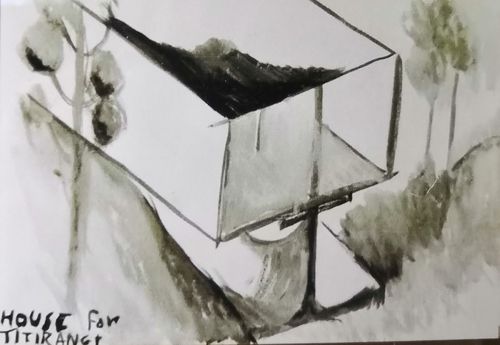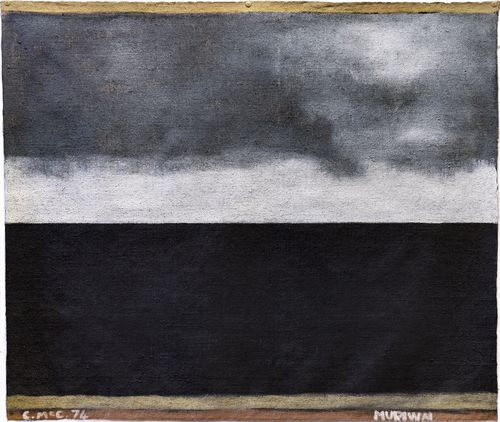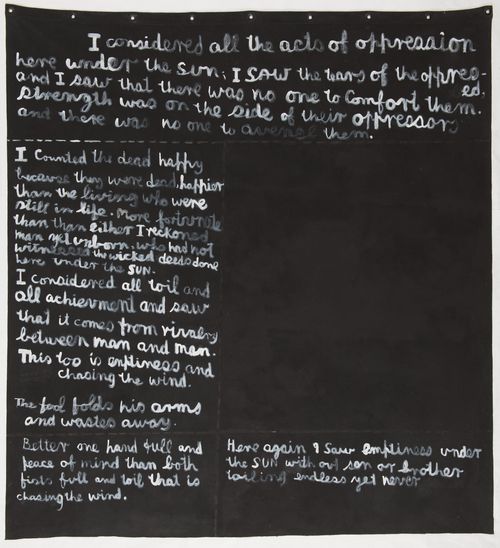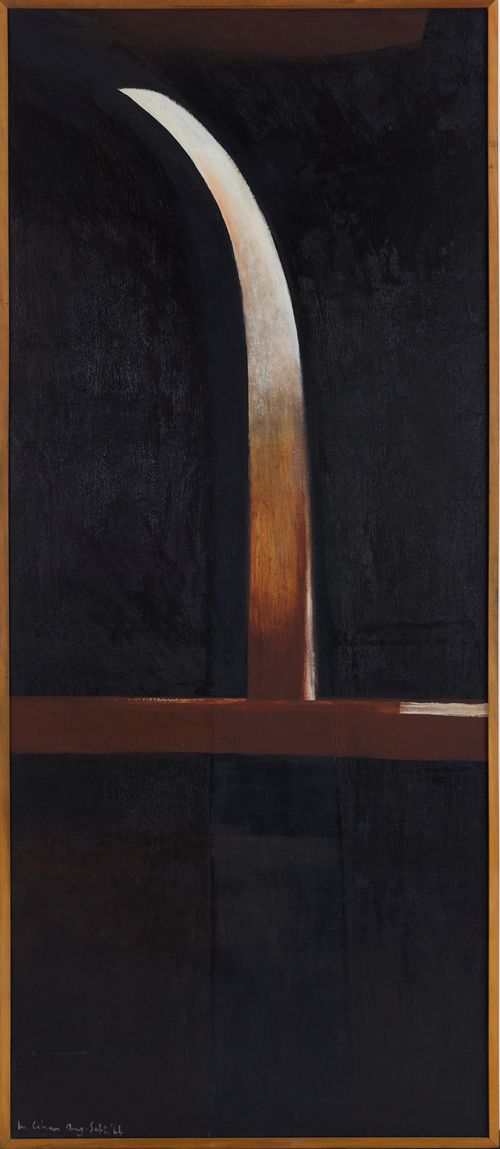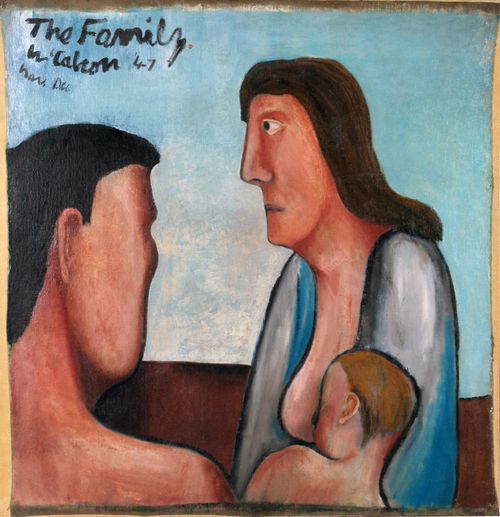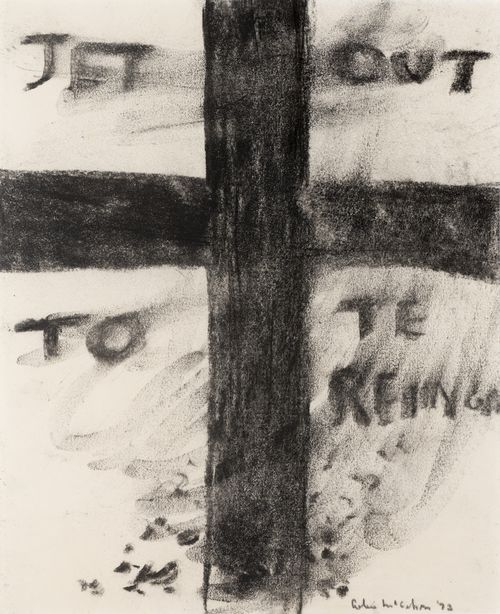Kauri

Kauri, 1953, Oil on baord, 870 x1180 mm. Collection of BNZ courtesy McCahon Research and Publication Trust

View of the Parehuia residency through the kauri grove at 67 - 69 Otitori Bay Road
Naomi McCleary
October 2020
Memory is a fickle dance partner. I feel as though I have walked alongside Colin McCahon's paintings all my life; that they are the corner stone of what it feels like to be of this country, this landscape, these people. The moments are fleeting. I recall looking at the early figurative works and having an 'aha' moment – this is the holy family but it's here and it's ours. Not unlike the epiphany in the moment I closed the last page of Janet Frame's Owls Do Cry. She wasn't the first New Zealand voice in our literature, but she was my first New Zealand voice.
Much later I recall standing in a tiny room at the old Lopdell Gallery, where The Wake (1958) had been hung in the round. To be literally standing in a Kauri forest; to be surrounded by Caselberg's poem – that was a moment – and for me, it should never be seen otherwise.
The Titirangi years, and the wonderfully fractured Kauri works and the jewel-like, kaleidoscopic French Bay paintings. They were a joy, and I will return to one of those as my chosen image.
And then the monumental works that followed; the scale, the weight, the confrontation. Not always so easy, but ultimately so rewarding. This is where my gratitude to writers and commentators comes in; to Peter Simpson and Justin Paton in particular I owe much. They pealed away my sometimes sense that I couldn't go there, that I didn't understand and allowed me to experience the drama, the intensity - and to 'own' them for myself.
So to my chosen image: Kauri (1953) takes me to a moment in the mid-1990s when I was in the early days of my tenure as the Arts Manager for Waitakere City Council.
Mayor Bob Harvey (now Sir Bob) was on the throne and it marks a point at which I realised, yet again, that having an 'arts-literate' mayor was a gift that very few in local body politics experienced. There had been informal talk about the cottage in Otitori Bay Road, where the McCahon's had spent much of the 1950s. The owner, Jacqui Amoamo, had purchased it from Colin and had lived there for nearly 40 years without making any substantial changes. Bless her for that! She intimated that she might like to sell it to council when the time was right for her. I got to know her and for many months, probably years, we kept that conversation alive over regular glasses of red wine on the deck. At this stage it was as much about the Kauri trees as it was the cottage. If then, you stood on the road above the house and looked down you saw a scene, captured in Kauri – of the house sitting among the trees with another house to the left. What was not known to me at the time was that the land between the two houses was on two titles; one with the neighbours house on it and a separate narrow strip of Kauri-clad section between. And the owners decided to sell it! The dilemma: Jacqui wasn't ready to sell, but if the section was bought and built on, the vista that Colin painted would be gone for ever. I knew that I had to get council to purchase the section on the expectation, but no absolute certainty, that the house would eventually come up for sale. Believe me, councils tend not to take a punt on rate payers money. So I had to convince a round table of good people, but not necessarily McCahon fans, to formally approve purchasing the section. Mayor Bob was, of course, clear about it, but he had only one vote. Along with the usual bureaucratic report, I had put together a slide show of paintings to illustrate the importance of Colin McCahon and of this site; Kauri and French Bay works that I felt would not be too confrontational. My recall is that there was stunned silence, then some of the braver ones began to respond.
There is a book of cartoons about modern art that was published in the 1970s called A Child of Six Could Do It. It had been both a source of amusement and also a real-life experience for me working in the arts. I had been told on other occasions that 'my kid could do better than that!'
In the ensuing conversation that day it actually happened. A councillor with no apparent embarrassment and with particular reference to this Kauri painting, said 'a child of five could do that'. It was a breath-taking moment. The details of what followed are murky, but the purchase was ably supported by Mayor Bob and my case sufficiently persuasive to win the day. It is only in retrospect that I realise what a remarkable decision it was.
The McCahon house site did not come up for sale until several years later, but once that had been achieved and a trust put in place, the combined title allowed the trust to build the artists residency apartment and studio. Without both sites I doubt it would ever have been possible. The apartment actually bestrides the boundary line.
A small, but memorable moment, but one with such a long reach into the future and the residency programme that is flourishing today.
